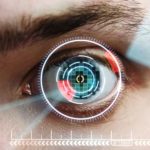“The UNHCR has been increasingly vocal about the advantages of biometric identification in recent years, primarily for its utility in establishing identity for displaced individuals who often lack official documentation.”
Biometric technology is helping the United Nations’ refugee agency to cope with the COVID-19 pandemic, the agency says.

In a new report entitled, “UNHCR Cash Assistance and COVID 19: Emerging Field Practices”, the organization explains that is has been testing contactless biometrics in Bangladesh, Ethiopia, Malawi, and Zambia for the identification of refugees and displaced persons in those areas. This has been done primarily via iris recognition, which has been used for the registration of refugees as well as for authentication during cash and in-kind transactions.
“Following successful testing, UNHCR Bangladesh has shifted to an iris-only (no fingerprint) registration and assistance management strategy,” the agency explained. “In Malawi, the government has agreed for UNHCR to continue with biometrics but using the newly developed option.”
The UNHCR has been increasingly vocal about the advantages of biometric identification in recent years, primarily for its utility in establishing identity for displaced individuals who often lack official documentation. It isn’t clear to what extent the agency is using iris recognition to facilitate aid transactions, but the organization announced earlier this year that IrisGuard technology was being used to distribute financial aid to refugees in Egypt.
In detailing the advantages of contactless biometrics in its new report, the UNHCR noted that the technology eliminates the risk of transmission of COVID-19 through contact, and that the technology is available now, though it also noted that it “may be more challenging to acquire and capture the iris images due to external lighting”.
–
April 17, 2020 – by Alex Perala







Follow Us